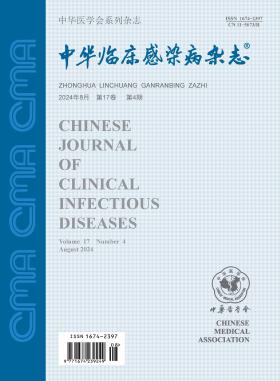Risk factors for fatal outcome in patients with severe COVID-19: an analysis of 107 cases in Wuhan
Kai-ming Dai, A. Bao, P. Ye, M. Xu, Qinran Zhang, Yu Zhou, Wanli Jiang, Wubian Jiang, Huimin Wang, Meng Zhu, Lingling Tang, Chengliang Zhu, Yuchen Xia, Ying'an Jiang, Xiufen Zou, Lanjuan Li
求助PDF
{"title":"Risk factors for fatal outcome in patients with severe COVID-19: an analysis of 107 cases in Wuhan","authors":"Kai-ming Dai, A. Bao, P. Ye, M. Xu, Qinran Zhang, Yu Zhou, Wanli Jiang, Wubian Jiang, Huimin Wang, Meng Zhu, Lingling Tang, Chengliang Zhu, Yuchen Xia, Ying'an Jiang, Xiufen Zou, Lanjuan Li","doi":"10.3760/CMA.J.ISSN.1674-2397.2020.04.002","DOIUrl":null,"url":null,"abstract":"Objective: To analyze the risk factors of fatal outcome in patients with severe COVID-19 Methods: The clinical characteristics of 107 patients with severe COVID-19 admitted in Renmin Hospital of Wuhan University from February 12 to March 12, 2020 were retrospectively analyzed During the hospitalization 49 patients died (fatal group) and 58 patients survived (survival group) The clinical characteristics, baseline laboratory findings were analyzed using R and Python statistical software The risk factors of fatal outcome in patients with severe COVID-19 were analyzed with multivariate logistic regression Results: Univariate analysis showed that the two groups had statistically significant differences in age, clinical classification, dry cough, dyspnea and laboratory test indicators (P<0 05 or <0 01) The random forest model was used to rank the significance of the statistically significant variables in the univariate analysis, and the selected variables were included in the binary logistic regression model After stepwise regression analysis, the patient's clinical type, age, neutrophil count, and the proportion of CD3 cells are independent risk factors for death in severe COVID-19 patients Dry cough is an independent protective factor for the death of severe COVID-19 patients Conclusion: COVID-19 patients with fatal outcome are more likely to have suppressed immune function, secondary infection and inflammatory factor storm These factors may work together in severe patients, leading to intractable hypoxemia and multiple organ dysfunction and resulting in fatal outcome of patients The study indicates that timely intervention and treatment measures against above factors may be effective to save the lives of patients with severe COVID-19 Copyright © 2020 by the Chinese Medical Association","PeriodicalId":52394,"journal":{"name":"中华临床感染病杂志","volume":"13 1","pages":"257-263"},"PeriodicalIF":0.0000,"publicationDate":"2020-08-28","publicationTypes":"Journal Article","fieldsOfStudy":null,"isOpenAccess":false,"openAccessPdf":"","citationCount":"1","resultStr":null,"platform":"Semanticscholar","paperid":null,"PeriodicalName":"中华临床感染病杂志","FirstCategoryId":"3","ListUrlMain":"https://doi.org/10.3760/CMA.J.ISSN.1674-2397.2020.04.002","RegionNum":0,"RegionCategory":null,"ArticlePicture":[],"TitleCN":null,"AbstractTextCN":null,"PMCID":null,"EPubDate":"","PubModel":"","JCR":"Q4","JCRName":"Medicine","Score":null,"Total":0}
引用次数: 1
引用
批量引用
重症新冠肺炎患者死亡的危险因素——武汉107例病例分析
目的:分析重症新冠肺炎患者死亡的危险因素。方法:分析2月12日至3月12日武汉大学人民医院收治的107例重症新冠肺炎患者的临床特点,回顾性分析2020年住院期间死亡49例(死亡组),存活58例(存活组),使用R和Python统计软件分析基线实验室结果。用多变量逻辑回归分析重症新冠肺炎患者死亡结局的危险因素。结果:单变量分析显示,两组患者在年龄、临床分类、干咳、,呼吸困难和实验室测试指标(P<0.05或<0.01)采用随机森林模型对单变量分析中具有统计学意义的变量的显著性进行排序,并将所选变量纳入二元逻辑回归模型,CD3细胞的比例是重症新冠肺炎患者死亡的独立危险因素干咳是重症新冠肺炎患者死亡的一个独立保护因素,导致顽固性低氧血症和多器官功能障碍并导致患者死亡研究表明,针对上述因素的及时干预和治疗措施可能有效挽救重症新冠肺炎患者的生命版权所有©2020中国医学会
本文章由计算机程序翻译,如有差异,请以英文原文为准。


